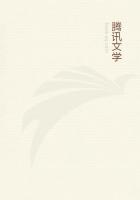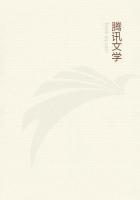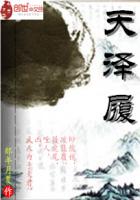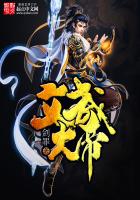DEIR-EL-BAHARI
Place for Queen Hatshepsu! Surely she comes to a sound of flutes, a merry noise of thin, bright music, backed by a clashing of barbaric cymbals, along the corridors of the past; this queen who is shown upon Egyptian walls dressed as a man, who is said to have worn a beard, and who sent to the land of Punt the famous expedition which covered her with glory and brought gold to the god Amun. To me most feminine she seemed when I saw her temple at Deir-el-Bahari, with its brightness and its suavity; its pretty shallowness and sunshine; its white, and blue, and yellow, and red, and green and orange; all very trim and fanciful, all very smart and delicate; full of finesse and laughter, and breathing out to me of the twentieth century the coquetry of a woman in 1500 B.C. After the terrific masculinity of Medinet-Abu, after the great freedom of the Ramesseum, and the grandeur of its colossus, the manhood of all the ages concentrated in granite, the temple at Deir-el-Bahari came upon me like a delicate woman, perfumed and arranged, clothed in a creation of white and blue and orange, standing--ever so knowingly--against a background of orange and pink, of red and of brown-red, a smiling coquette of the mountain, a gay and sweet enchantress who knew her pretty powers and meant to exercise them.
Hatshepsu with a beard! Never will I believe it. Or if she ever seemed to wear one, I will swear it was only the tattooed ornament with which all the lovely women of the Fayum decorate their chins to-day, throwing into relief the smiling, soft lips, the delicate noses, the liquid eyes, and leading one from it step by step to the beauties it precedes.
Mr. Wallis Budge says in his book on the antiquities of Egypt: "It would be unjust to the memory of a great man and a loyal servant of Hatshepsu, if we omitted to mention the name of Senmut, the architect and overseer of works at Deir-el-Bahari." By all means let Senmut be mentioned, and then let him be utterly forgotten. A radiant queen reigns here--a queen of fantasy and splendor, and of that divine shallowness--refined frivolity literally cut into the mountain--which is the note of Deir-el-Bahari. And what a clever background! Oh, Hatshepsu knew what she was doing when she built her temple here. It was not the solemn Senmut (he wore a beard, I'm sure) who chose that background, if I know anything of women.
Long before I visited Deir-el-Bahari I had looked at it from afar. My eyes had been drawn to it merely from its situation right underneath the mountains. I had asked: "What do those little pillars mean? And are those little doors?" I had promised myself to go there, as one promises oneself a /bonne bouche/ to finish a happy banquet. And I had realized the subtlety, essentially feminine, that had placed a temple there. And Menu-Hotep's temple, perhaps you say, was it not there before the queen's? Then he must have possessed a subtlety purely feminine, or have been advised by one of his wives in his building operations, or by some favorite female slave. Blundering, unsubtle man would probably think that the best way to attract and to fix attention on any object was to make it much bigger than things near and around it, to set up a giant among dwarfs.
Not so Queen Hatshepsu. More artful in her generation, she set her long but little temple against the precipices of Libya. And what is the result? Simply that whenever one looks toward them one says, "What are those little pillars?" Or if one is more instructed, one thinks about Queen Hatshepsu. The precipices are as nothing. A woman's wile has blotted them out.
And yet how grand they are! I have called them tiger-colored precipices. And they suggest tawny wild beasts, fierce, bred in a land that is the prey of the sun. Every shade of orange and yellow glows and grows pale on their bosses, in their clefts. They shoot out turrets of rock that blaze like flames in the day. They show great teeth, like the tiger when any one draws near. And, like the tiger, they seem perpetually informed by a spirit that is angry. Blake wrote of the tiger:
"Tiger, tiger, burning bright In the forests of the night."
These tiger-precipices of Libya are burning things, avid like beasts of prey. But the restored apricot-colored pillars are not afraid of their impending fury--fury of a beast baffled by a tricky little woman, almost it seems to me; and still less afraid are the white pillars, and the brilliant paintings that decorate the walls within.
As many people in the sad but lovely islands off the coast of Scotland believe in "doubles," as the old classic writers believed in man's "genius," so the ancient Egyptian believed in his "Ka," or separate entity, a sort of spiritual other self, to be propitiated and ministered to, presented with gifts, and served with energy and ardor.
On this temple of Deir-el-Bahari is the scene of the birth of Hatshepsu, and there are two babies, the princess and her Ka. For this imagined Ka, when a great queen, long after, she built this temple, or chapel, that offerings might be made there on certain appointed days.
Fortunate Ka of Hatshepsu to have had so cheerful a dwelling!
Liveliness pervades Deir-el-Bahari. I remember, when I was on my first visit to Egypt, lunching at Thebes with Monsieur Naville and Mr.
Hogarth, and afterward going with them to watch the digging away of the masses of sand and rubbish which concealed this gracious building.
I remember the songs of the half-naked workmen toiling and sweating in the sun. and I remember seeing a white temple wall come up into the light with all the painted figures surely dancing with joy upon it.
And they are surely dancing still.
Here you may see, brilliant as yesterday's picture anywhere, fascinatingly decorative trees growing bravely in little pots, red people offering incense which is piled up on mounds like mountains, Ptah-Seket, Osiris receiving a royal gift of wine, the queen in the company of various divinities, and the terrible ordeal of the cows.

